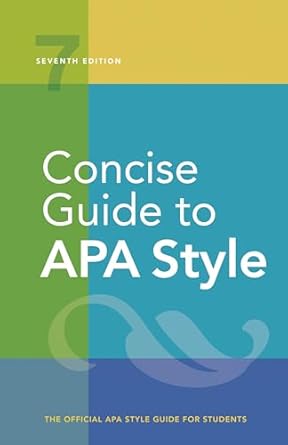[toc]
table checklist review enhance data presentation
Concise Guide to APA Style: 7th Edition (OFFICIAL)
Page 169 Review
A Comprehensive Review of “Table Checklist”
This ebook excerpt, titled “Table Checklist,” presents a meticulously crafted guide for ensuring the quality and consistency of tables in academic and professional writing.
It provides a series of insightful questions designed to help authors and editors create clear, accurate, and effective tables.
This review will delve into the key aspects of the checklist, highlighting its strengths and potential areas for enhancement.
The Importance of a Table Checklist
Tables are a fundamental component of scholarly communication, enabling the concise presentation of complex data.
A poorly constructed table can confuse readers, obscure important findings, and ultimately undermine the credibility of the work.
This checklist serves as a valuable tool for preventing such issues.
Detailed Analysis of the Checklist Items
The checklist begins with a fundamental question: “Is the table necessary?” This prompts authors to consider whether the information could be presented more effectively in another format, such as text or a figure.
This initial assessment is crucial for avoiding unnecessary complexity and ensuring that the table truly adds value to the document.
Consistency is emphasized in the next question: “Are all comparable tables in the paper consistent in presentation?” This ensures a unified and professional look throughout the document, making it easier for readers to compare and interpret data across multiple tables.
The checklist then moves on to formatting and presentation guidelines. “Are all tables numbered consecutively with Arabic numerals in the order in which they are first mentioned in the text?
Is the table number bold and flush left?” This adherence to standard conventions ensures that tables are easily identifiable and navigable within the document.
Proper referencing is addressed by: “Are all tables called out or referred to in the text?” A table should never appear in isolation; the text must provide context and explanation for the data presented.
Title clarity is highlighted: “Is the table title brief but explanatory?
Is it written in italic title case and flush left?” A well-written title provides a concise summary of the table’s content, allowing readers to quickly understand its purpose.
The checklist emphasizes the importance of clear column headings: “Does every column have a column heading, including the leftmost (stub) column?
Are all column headings centered?” Column headings provide context for the data in each column, preventing ambiguity and facilitating interpretation.
Addressing abbreviations and special formatting: “Are all abbreviations explained (with exceptions as noted in Sec- tion 7.15), as well as the special use of italics, bold, parentheses, dashes, and symbols?” Clarity is paramount, and all non-standard elements must be explicitly defined.
The checklist correctly calls out: “Are the table notes, if needed, in the order of general note, spe- cific note, and probability note?
Are the notes double-spaced and flush left and in the same font as the text of the paper?“
Correct table borders: “Are table borders correctly applied (at the top and bottom of the table, beneath column headings, above table spanners)?” helps the reader to process and compartmentalize data.
Line spacing consideration: “Is the line spacing of the table correctly applied (double-spacing for the table number, title, and notes; single-spacing, one-and-a- half-spacing, or double-spacing for the table body)?” affects readability.
“Are entries in the left column flush left beneath the centered stub heading?
Are all other column headings and cell entries centered (except when aligning entries to the left would improve readability)?” The correct cell alignment assists comprehension.
Statistical rigor is emphasized with the questions: “Do Are confidence intervals reported for all major point estimates?
Is the confidence level—for example, 95%—stated, and is the same level of confidence used for all tables and throughout the paper?” and “If the results of statistical significance testing are included in the table, are all p values correctly identified?
Are exact p values pro- vided?
Is the “p <” notation used only when needed?
When the “5 <" notation is used, are asterisks or daggers attached to the appropriate table entries and defined?
Are asterisks or daggers used consistently to indicate the same p value in all tables in the same paper?” These are critical for ensuring the validity and interpretability of statistical findings.
Finally, the checklist addresses copyright considerations: “If all or part of a table is reprinted or adapted, is there a copyright attribution?
If permission was necessary to reproduce the table, have you received written permission for its reuse (in print and electronic forms) from the copyright holder and sent a copy of that written permission with the final version of your paper?” This reinforces the importance of ethical scholarship and legal compliance.
Strengths of the Checklist
- Comprehensive Coverage: The checklist covers a wide range of aspects, from basic formatting to statistical reporting and copyright considerations.
- Clear and Concise Language: The questions are phrased in a straightforward manner, making the checklist easy to understand and use.
- Emphasis on Clarity and Accuracy: The checklist prioritizes the creation of tables that are easy to read, interpret, and trust.
Potential Areas for Enhancement
- Accessibility Considerations: The checklist could be expanded to include guidelines for making tables accessible to individuals with disabilities, such as providing alternative text descriptions for screen readers.
- Software-Specific Instructions: While the checklist provides general guidelines, it could be helpful to include specific instructions for creating tables in common software programs like Microsoft Excel or Google Sheets.
Conclusion
The “Table Checklist” is a valuable resource for anyone who creates or edits tables for academic or professional purposes.
By following the guidelines outlined in this checklist, authors and editors can ensure that their tables are clear, accurate, and effective, ultimately enhancing the overall quality of their work.
It serves as a strong foundation and reminder of best practices for impactful data presentation.
Buy full ebook for only $18: https://www.lulu.com/shop/american-psychological-association/concise-guide-to-apa-style-7th-edition-official/ebook/product-rmzpq54.html?page=1&pageSize=4

